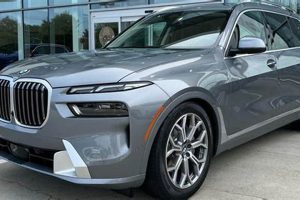An Asian skyscraper refers to a high-rise building that is located in or designed in the style of Asia. Skyscrapers in Asia are known for their impressive height, architectural innovation, and incorporation of cutting-edge technology. They serve as landmarks and symbols of economic prosperity in their respective cities.
The development of Asian skyscrapers has been driven by the region’s rapid urbanization and economic growth. These buildings often house offices, residential units, retail spaces, and other commercial ventures, creating vertical communities that optimize space in densely populated areas. They also serve as centers for innovation and sustainability, featuring advanced construction techniques and environmentally friendly designs.
Some notable examples of Asian skyscrapers include the Burj Khalifa in Dubai, the Shanghai Tower in Shanghai, and the Taipei 101 in Taipei. These buildings represent architectural marvels and have redefined the skylines of their respective cities. They are not only functional structures but also tourist attractions, offering breathtaking views and unique experiences.
1. Height
The height of Asian skyscrapers is a defining characteristic that sets them apart from buildings in other regions. This impressive height is not merely a matter of aesthetics; it also serves several important purposes. Firstly, it allows for maximum space utilization in densely populated urban areas, where land is scarce. By building upwards, Asian skyscrapers can accommodate a large number of people and businesses within a relatively small footprint.
Secondly, the height of Asian skyscrapers provides panoramic views of the surrounding cityscape, making them popular destinations for tourists and residents alike. Observation decks and restaurants perched atop these towering structures offer breathtaking vistas that showcase the city’s landmarks and natural beauty. The height of Asian skyscrapers also contributes to their iconic status, making them recognizable symbols of economic prosperity and architectural achievement.
Finally, the height of Asian skyscrapers can be leveraged for sustainable design strategies. By incorporating wind turbines and solar panels into their facades, these buildings can generate renewable energy and reduce their environmental impact. Additionally, the use of advanced construction materials and engineering techniques allows for the creation of lightweight and resilient structures that can withstand extreme weather conditions.
In conclusion, the height of Asian skyscrapers is not just a matter of aesthetics but also a reflection of the region’s ingenuity and commitment to innovation. These towering structures serve multiple purposes, from maximizing space utilization to promoting sustainable practices and creating iconic landmarks that define the skylines of Asian cities.
2. Design
The design of Asian skyscrapers is a harmonious blend of traditional Asian aesthetics and modern architectural styles. This unique fusion creates visually stunning structures that reflect the cultural heritage and forward-thinking nature of the region. Traditional Asian aesthetics often incorporate elements such as intricate patterns, vibrant colors, and natural materials like bamboo and wood.
By incorporating these traditional elements into modern architectural designs, Asian skyscrapers create a sense of cultural continuity and identity. For example, the Shanghai Tower, one of the tallest buildings in the world, features a facade inspired by traditional Chinese architecture, with its spiraling form resembling a dragon’s spine. Similarly, the Taipei 101 in Taiwan incorporates traditional Taiwanese motifs into its design, such as the eight-sided pagoda-like top.
The integration of modern architectural styles, on the other hand, ensures that Asian skyscrapers remain at the forefront of innovation and sustainability. Advanced construction techniques and materials allow for the creation of towering structures that are both aesthetically pleasing and environmentally conscious. For instance, the Burj Khalifa in Dubai utilizes a diagrid structural system that reduces wind resistance and provides panoramic views from its observation decks.
The design of Asian skyscrapers
3. Innovation
Innovation is a defining characteristic of Asian skyscrapers, setting them apart from their counterparts in other regions. This relentless pursuit of innovation manifests in two key areas: the incorporation of cutting-edge technology and the adoption of sustainable design principles.
- Integration of Cutting-Edge Technology
Asian skyscrapers are at the forefront of technological advancements, seamlessly integrating smart and intelligent systems into their design. These technologies enhance the functionality, efficiency, and user experience of these towering structures. - Adoption of Sustainable Design Principles
Sustainability is a key consideration in the design of Asian skyscrapers. Architects and engineers are incorporating eco-friendly materials, energy-efficient systems, and innovative construction methods to reduce the environmental impact of these buildings.
The integration of cutting-edge technology and sustainable design principles in Asian skyscrapers is not only a testament to the region’s commitment to innovation but also a reflection of the growing demand for intelligent and environmentally conscious urban development. These skyscrapers serve as beacons of progress, demonstrating how architectural marvels can coexist harmoniously with environmental stewardship.
4. Mixed-use
The mixed-use nature of Asian skyscrapers is a defining characteristic that sets them apart from traditional high-rise buildings. By integrating various functions within a single structure, these skyscrapers create vibrant vertical communities that cater to a wide range of needs.
- Vertical Communities
Mixed-use Asian skyscrapers foster a sense of community by bringing together people from diverse backgrounds and occupations within a single building. This vertical integration promotes social interaction, convenience, and a sense of belonging. - Efficient Space Utilization
The mixed-use design optimizes space utilization in densely populated urban areas. By combining different functions within one skyscraper, it reduces the need for separate buildings, resulting in more efficient land use and a more compact cityscape. - Enhanced Convenience
Mixed-use skyscrapers offer unparalleled convenience to their occupants. Residents can easily access offices, retail stores, restaurants, and other amenities within the same building, eliminating the need for lengthy commutes and saving valuable time. - Economic Benefits
The mixed-use model has significant economic benefits. It attracts businesses and generates revenue streams from multiple sources, contributing to the overall profitability and sustainability of these skyscrapers.
In conclusion, the mixed-use nature of Asian skyscrapers is a key factor in their success. It promotes vertical communities, optimizes space utilization, enhances convenience, and generates economic benefits, making these buildings not only architectural marvels but also vibrant hubs of urban life.
5. Vertical Communities
In Asian cities, the concept of vertical communities has gained significant traction due to the increasing demand for space optimization and the need for fostering a sense of community within high-rise buildings. This has become a defining characteristic of Asian skyscrapers, where mixed-use developments integrate residential units, offices, retail spaces, and other commercial ventures within a single structure.
By creating vertical communities, Asian skyscrapers address the challenges of space constraints in densely populated urban areas. By stacking different functions vertically, these buildings maximize land utilization and reduce the need for sprawling horizontal development, promoting a more compact and sustainable cityscape.
Furthermore, the vertical community model fosters a sense of belonging and social interaction among residents. By bringing people from diverse backgrounds and occupations together within a single building, these skyscrapers create opportunities for neighbors to connect, interact, and build relationships. This social integration strengthens the community bonds and contributes to the overall well-being of its members.
A notable example of vertical communities in Asian skyscrapers is the Taipei 101 in Taiwan. This iconic building houses a mix of offices, residential units, retail stores, and leisure facilities, creating a vibrant and self-contained community. Another example is the International Commerce Centre in Hong Kong, which combines a hotel, offices, and a shopping mall within its towering structure, fostering a sense of community among its occupants.
In conclusion, the concept of vertical communities is a key component of Asian skyscrapers. It addresses the challenges of space optimization and promotes a sense of community within high-rise buildings. By integrating various functions and bringing people together, these skyscrapers create vibrant and sustainable urban environments that enhance the quality of life for their occupants.
6. Landmarks
Asian skyscrapers are not just architectural marvels; they are also iconic landmarks that symbolize the economic prosperity and cultural identity of their respective cities. These towering structures have become synonymous with the urban landscapes of Asia, attracting tourists and locals alike with their impressive height, unique designs, and unparalleled views.
- Symbols of Economic Power
Asian skyscrapers are often seen as symbols of economic power and development. Their sheer height and grand designs reflect the booming economies of many Asian countries and their aspirations for global recognition. For example, the Burj Khalifa in Dubai, the world’s tallest building, stands as a testament to the United Arab Emirates’ rapid economic growth and ambitions. - Cultural Identity
Asian skyscrapers also play a role in shaping the cultural identity of their cities. Their architectural styles often incorporate elements of traditional Asian design, creating a unique blend of modernity and heritage. For example, the Taipei 101 in Taiwan features a facade inspired by traditional Chinese architecture, while the Petronas Towers in Kuala Lumpur draw inspiration from Islamic motifs. - Tourist Attractions
Asian skyscrapers are major tourist attractions, offering breathtaking views and unique experiences. Many of these buildings feature observation decks and restaurants that provide panoramic vistas of the surrounding cityscape. For example, the Shanghai Tower in China has an observation deck that offers stunning views of the city’s skyline and the Huangpu River. - Sense of Place
Asian skyscrapers contribute to the sense of place and identity for the cities they inhabit. They become familiar landmarks that people associate with their hometown or a particular neighborhood. For example, the Tokyo Skytree in Japan has become an iconic symbol of the city’s futuristic skyline and a popular destination for both locals and tourists.
In conclusion, Asian skyscrapers are more than just tall buildings; they are landmarks that embody the economic power, cultural identity, and sense of place of their respective cities. Their unique designs, impressive height, and symbolic significance make them architectural marvels that attract people from all over the world.
7. Tourism
Asian skyscrapers are renowned for their architectural marvels and the unique experiences they offer to tourists. These towering structures have become major attractions, drawing visitors from around the world to witness their grandeur and enjoy the breathtaking views and exceptional amenities they provide.
- Architectural Wonders
Asian skyscrapers are architectural masterpieces that showcase innovative designs and cutting-edge engineering. Their unique shapes, intricate facades, and soaring heights make them visually stunning landmarks that attract tourists eager to admire their beauty and capture memorable photographs. For example, the Burj Khalifa in Dubai, with its record-breaking height and distinctive sail-like design, has become a global icon and a must-visit destination for tourists. - Observation Decks
Many Asian skyscrapers feature observation decks that offer panoramic views of the surrounding cityscape. These decks provide tourists with a unique perspective of the city, allowing them to take in the vastness and complexity of the urban landscape. For instance, the Shanghai Tower in China has an observation deck on the 118th floor, offering breathtaking views of the city’s skyline and the Huangpu River. - Fine Dining Experiences
Asian skyscrapers often house fine dining restaurants that provide exquisite culinary experiences combined with stunning views. These restaurants offer a sophisticated ambiance and delectable dishes, making them popular destinations for special occasions and romantic evenings. For example, the Atmosphere restaurant in the Burj Khalifa is the world’s highest restaurant, offering diners an unforgettable dining experience amidst the clouds. - Cultural Immersion
Asian skyscrapers are not just architectural attractions; they also offer opportunities for cultural immersion. Many of these buildings incorporate traditional design elements a
nd motifs that reflect the local culture and heritage. For tourists, visiting these skyscrapers provides a glimpse into the city’s history and cultural identity. For example, the Taipei 101 in Taiwan features a traditional pagoda-like top, paying homage to the country’s architectural heritage.
In conclusion, the tourism aspect of Asian skyscrapers is closely intertwined with their architectural marvels and the unique experiences they offer. These skyscrapers attract tourists with their stunning designs, breathtaking views, and exceptional amenities, providing a combination of architectural appreciation, cultural immersion, and unforgettable memories.
FAQs about Asian Skyscrapers
This section addresses frequently asked questions about Asian skyscrapers, providing informative answers to common concerns and misconceptions.
Q1: What are the defining characteristics of Asian skyscrapers?
Asian skyscrapers stand out for their impressive height, often reaching over 100 stories. They showcase a blend of traditional Asian aesthetics and modern architectural styles, incorporating cutting-edge technology and sustainable design principles. These mixed-use buildings house a combination of offices, residential units, retail spaces, and other commercial ventures, creating vertical communities that optimize space and foster a sense of community.
Q2: Are Asian skyscrapers safe?
Yes, Asian skyscrapers are designed and constructed to meet strict safety standards. They employ advanced engineering techniques and incorporate features to withstand earthquakes, strong winds, and other natural disasters. Regular inspections and maintenance ensure ongoing safety and compliance with building codes.
Q3: How do Asian skyscrapers contribute to sustainability?
Many Asian skyscrapers embrace sustainable design practices to minimize their environmental impact. They incorporate energy-efficient systems, utilize renewable energy sources such as solar and wind power, and employ water conservation measures. Green building certifications, such as LEED and BREEAM, attest to their commitment to sustainability.
Q4: What are the unique experiences offered by Asian skyscrapers?
Asian skyscrapers offer a range of unique experiences for visitors. Observation decks provide breathtaking panoramic views of the city, fine dining restaurants present exquisite culinary delights amidst stunning heights, and cultural elements integrated into the design showcase the local heritage. These experiences combine architectural appreciation with cultural immersion.
Q5: How do Asian skyscrapers impact the urban landscape?
Asian skyscrapers have a significant impact on the urban landscape. They serve as landmarks and symbols of economic prosperity, shaping the identity of their respective cities. Their vertical communities optimize land use, reduce urban sprawl, and promote efficient transportation systems, contributing to sustainable urban development.
Q6: What is the future of Asian skyscrapers?
The future of Asian skyscrapers is promising, with ongoing advancements in technology and design. They will continue to push the boundaries of height and innovation, while incorporating even more sustainable features. Mixed-use developments and vertical communities will remain key trends, catering to the evolving needs of urban populations.
These FAQs provide a comprehensive overview of various aspects related to Asian skyscrapers, addressing common concerns and highlighting their unique characteristics, safety measures, sustainability efforts, and impact on the urban landscape.
Continue to the next section for more in-depth exploration of Asian skyscrapers.
Tips for Designing and Constructing Asian Skyscrapers
The design and construction of Asian skyscrapers present unique challenges and opportunities. Here are some essential tips to ensure successful outcomes:
Tip 1: Embrace Mixed-Use Functionality
Incorporating a mix of functions, such as offices, residential units, retail spaces, and public amenities, optimizes space utilization and creates vibrant vertical communities. This approach caters to diverse needs and reduces urban sprawl.
Tip 2: Prioritize Sustainable Design
Implement sustainable design principles to minimize environmental impact. Utilize energy-efficient systems, incorporate renewable energy sources, and employ water conservation measures. Green building certifications demonstrate commitment to sustainability.
Tip 3: Integrate Cultural Elements
Incorporate traditional Asian aesthetics and motifs into the design to create a sense of cultural identity and continuity. This can be achieved through architectural features, interior design, and public art installations.
Tip 4: Ensure Structural Safety
Skyscrapers must withstand various natural disasters. Employ advanced engineering techniques and utilize high-strength materials to ensure structural integrity. Regular inspections and maintenance are crucial for ongoing safety.
Tip 5: Enhance User Experience
Create comfortable and convenient spaces for occupants, visitors, and the surrounding community. Provide amenities such as sky gardens, observation decks, and efficient transportation systems. Consider accessibility features for all users.
Tip 6: Leverage Technological Advancements
Incorporate smart technologies to enhance building operations, energy efficiency, and occupant comfort. Utilize building management systems, automated lighting controls, and security systems to optimize performance.
Tip 7: Collaborate with Experts
Assemble a multidisciplinary team of architects, engineers, sustainability consultants, and urban planners to ensure a comprehensive approach to design and construction. Collaboration fosters innovation and knowledge sharing.
Tip 8: Seek Local Input and Approval
Engage with local communities, authorities, and heritage organizations to gather feedback and obtain necessary approvals. Respecting local context and regulations ensures community acceptance and project success.
By following these tips, architects, engineers, and developers can design and construct Asian skyscrapers that are not only impressive architectural feats but also sustainable, culturally sensitive, and beneficial to the urban environment.
Conclusion
Asian skyscrapers are a testament to the region’s economic growth, architectural innovation, and cultural heritage. They have transformed skylines, fostered vertical communities, and provided unique experiences for visitors and occupants alike. Their design and construction present challenges that require a multidisciplinary approach, embracing sustainability, cultural sensitivity, and technological advancements.
The future of Asian skyscrapers holds exciting possibilities. As technology evolves and sustainability becomes even more critical, these towering structures will continue to evolve, pushing the boundaries of design and innovation. They will remain landmarks of progress and symbols of the region’s ever-changing urban landscape. By embracing the principles outlined in this article, architects, engineers, and developers can create Asian skyscrapers that are not only architectural marvels but also sustainable, community-oriented, and culturally significant.







